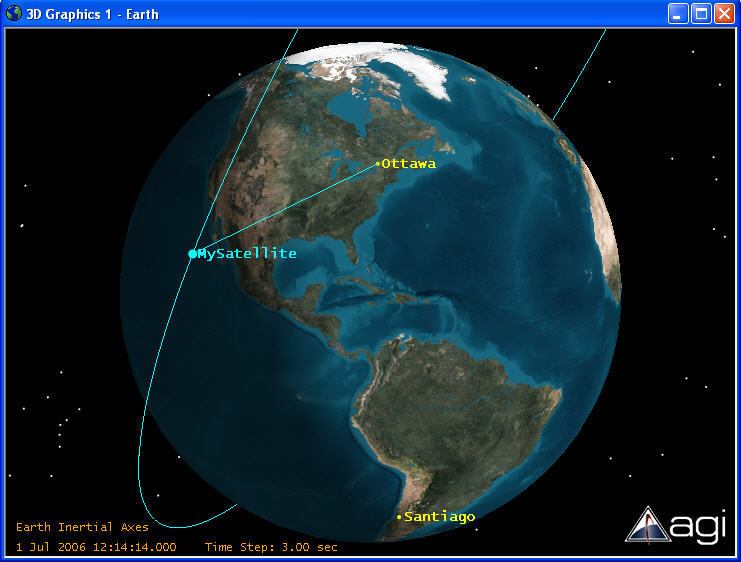Access |
The term Access in DME Component Libraries refers to intervisibility between objects. A typical access problem would be: when can my facility see my satellite? (or aircraft, etc.) Among other things, this probably depends on when the surface of the Earth lies between the facility and the satellite. This might involve the use of an idealized, spheroidal model of the Earth, or it might involve checking for terrain features such as mountains or your neighbor's fence, which obstruct line of sight.
Access, as defined in DME Component Libraries, is typically defined using a related idea of access constraints. If we ignore any factors that might constrain access between two objects, then access will always exist by definition. To make clear that we do have limitations, we might instead clarify our access problem from above as follows: when is my facility's view of my satellite not obstructed by the Earth?
In terms of relevant DME Component Libraries types, we are asking when this access relationship satisfies the CentralBodyObstructionConstraint, which requires that the view from one object to another not be obstructed by a central body such as the Earth or another planet. The following 3D visualization from STK shows how, at a given point in time, a facility in Ottawa satisfies this constraint, while one in Santiago does not. At that point in time, Santiago's view of the satellite is obstructed by the Earth.

Further constraints can be imposed. If visibility is poor near the horizon, for example, you may want to configure an ElevationAngleConstraint on the facility. Each constraint that is added to the computation further restricts access. Conceptually, the overall intervals when access exists are the intersection of the intervals when all constraints are satisfied.
Access Queries enable sophisticated analysis of the relationships between any number of objects. Constraints can be combined using logical operators such as And, Or, Not, At Least N, At Most N, and Exactly N. Also, each pair-wise constraint such as ElevationAngleConstraint can model the geometry between the objects in a different way. For example, one constraint may use the "true" positions of the objects while another accounts for light-time delay and aberration. Finally, queries meticulously account for delays caused by multiple hops through a chain or network. High-level methods help build queries from complex real-world situations. See the Access Queries topic for more details.
Over a given time period we can construct an access schedule, identifying time intervals when the satellite is and is not visible from our facility, and provide the data needed to highlight satellite ground track graphics to indicate periods of access, etc., as in the Satellite Tracker reference application.